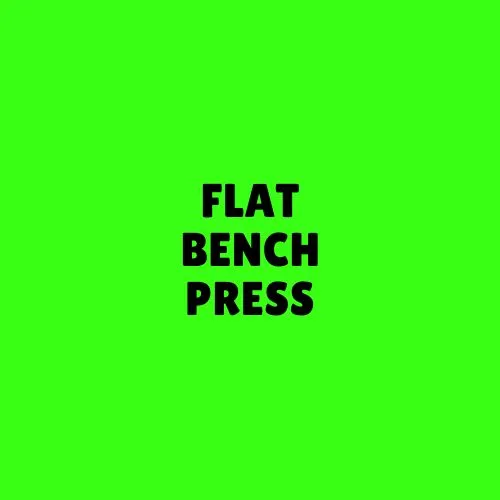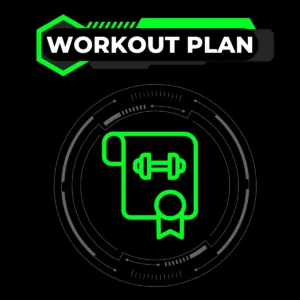Introduction
Welcome to the iron temple of chest development – the flat bench press. This foundational movement isn’t just an exercise; it’s a rite of passage for athletes chasing raw power and those iconic ‘armor plate’ pecs. Whether you’re grinding through your chest workout or prepping for a powerlifting meet, this compound movement delivers unmatched results when executed with precision.
“The bench press is the ultimate test of upper body strength – it’s you versus gravity in its purest form.” – Eddie Hall, World’s Strongest Man
From football players to CrossFit enthusiasts, athletes across disciplines use the workout flat bench to build functional pushing power. But don’t mistake this for just a ‘bro exercise’ – proper technique separates the gains-makers from the shoulder injury candidates.
Exercise Review
| Target Muscle Group | Chest |
|---|---|
| Exercise Type | Strength, Compound |
| Equipment Needed | Barbell, Flat Bench |
| Force Type | Push |
| Training Level | Beginner to Advanced |
| Supporting Muscles | Shoulders, Triceps |
| Mechanics | Compound |
| Primary Focus | Strength Development |
| Typical Duration | 3-5 sets of 5-12 reps |
| Variation Options | Close-grip, Paused, Board Press |
Primary Muscle Groups Worked
The flat chest press is your pectoralis major’s best friend. When you plant your back on that bench and drive the barbell upward, you’re primarily targeting:
Pectoralis Major (Sternal Head)
This lower chest muscle fiber does the heavy lifting during the pressing motion. The flat angle emphasizes development across the entire pectoral shelf.
Anterior Deltoids
Your front shoulders act as crucial stabilizers, especially during the lockout phase. Keep them engaged but not dominant to prevent shoulder strain.
Triceps Brachii
These arm extensors finish the movement strong. The closer your grip, the more they contribute – but don’t sacrifice chest activation!
Secondary Muscle Groups Engaged
While the bench press is chest-focused, it’s a full upper-body party:
Latissimus Dorsi
Your back muscles stabilize the shoulder girdle. Proper retraction creates a stable platform for heavy lifts.
Core Muscles
From glutes to abs, your entire midsection tightens to maintain proper arch and force transfer. No spaghetti core allowed!
Forearm Flexors
A crushing grip on the bar activates your lower arms, improving overall pressing stability.
Instructions
Let’s break down perfect flat bench press form:
Setup Fundamentals
1. Plant feet flat with slight glute tension
2. Create natural arch by driving shoulders into bench
3. Grip bar 1.5x shoulder width (marked by bench’s rings)
4. Unrack with straight arms, then lower to mid-chest
The Descent
Control the bar to your sternum, elbows at 45° from torso. Imagine bending the bar outward to maintain proper elbow track.
The Drive
Explode upward in a slight J-curve, driving through heels. Lockout shouldn’t be a joint hyperextension – stop when arms are vertical.
Benefits
Why the flat bench press deserves its throne:
Raw Strength Development
This movement builds foundational pushing power that translates to sports performance and daily functional movements.
Muscle Hypertrophy
The combination of heavy loading and full-range tension triggers significant chest growth when programmed properly.
Bone Density Improvement
Weight-bearing exercises like benching stimulate bone remodeling, crucial for long-term athletic health (NIH Study).
Variations
Spice up your workout flat bench routine:
Close-Grip Bench Press
Shifts emphasis to triceps while maintaining chest engagement. Great for lockout strength.
Paused Bench Press
1-second pause at chest depth eliminates momentum, building explosive power from the bottom position.
Spoto Press
Paused 1-2″ above chest maintains constant tension – a bodybuilder’s favorite for hypertrophy.
Common Mistakes
Avoid these bench blunders:
Elbow Flaring
90° angles stress shoulders. Maintain 45-60° elbow-to-torso alignment for joint safety.
Bouncing the Bar
Using ribcage rebound risks sternum injury and reduces muscle tension. Control the descent!
Partial Range of Motion
Half-reps equal half-results. Touch the chest (with control) on every rep for full pectoral stretch.
Safety and Precautions
Bench smart, bench long:
Spotter Necessity
Always use safety bars or a spotter when lifting heavy. Your pride isn’t worth a crushed windpipe.
Warm-Up Protocol
Prep shoulders with dynamic stretches and gradual weight ramping. Cold benching is injury city.
Load Management
Increase weight no more than 5-10% weekly. The smith machine bench press can help beginners master form before going heavy.
Equipment Needed
Essential gear for maximum gains:
Olympic Barbell
Standard 45lb/20kg bar with rotating sleeves. Ensure knurling matches your grip preference.
Flat Bench
Sturdy pad with non-slip base. Incline/decline benches work for variations in our Exercise Library.
Weight Plates
Bumper or iron plates with secure collars. Microplates help with progressive overload.
Alternative Exercises
Mix these chest crushers into your routine:
- Incline Bench Press – Targets upper chest
- Decline Bench Press – Focuses lower pectorals
- Flat Dumbbell Press – Increases range of motion
- Chest Dips – Bodyweight alternative
Other Names
This classic lift goes by:
- Barbell Bench Press
- Flat Press
- Standard Bench
- Chest Press (though technically different)
Conclusion
The flat bench press remains king for building chest mass and pushing power. Whether you’re chasing a new PR or sculpting a chiseled torso, this movement belongs in every serious lifter’s arsenal. Pair it with proper nutrition from our Training and Nutrition Plans for maximum gains. Remember – form first, ego last. Now get under that bar and make gravity your bitch!
FAQ
How often should I do flat bench press?
Most athletes benefit from benching 1-2x weekly. Powerlifters might do 3-4 sessions with varied intensity. Always allow 48hrs recovery between chest workouts.
Can beginners try flat bench press?
Absolutely! Start with an empty bar to master form. Use our Fitness Calculators to determine appropriate starting weights.
Smith machine vs free weight bench press?
Free weights build more stabilizer strength (NSCA Study), but smith machines help beginners focus on form. Use both strategically.
What’s better for chest growth – barbell or dumbbell?
Barbells allow heavier loads, while dumbbells increase range of motion. Alternate both in your program for complete development.
Should my elbows touch my sides when benching?
Elbows should form a 45-60° angle from your torso. Too close hits triceps, too wide stresses shoulders – find your goldilocks zone!



